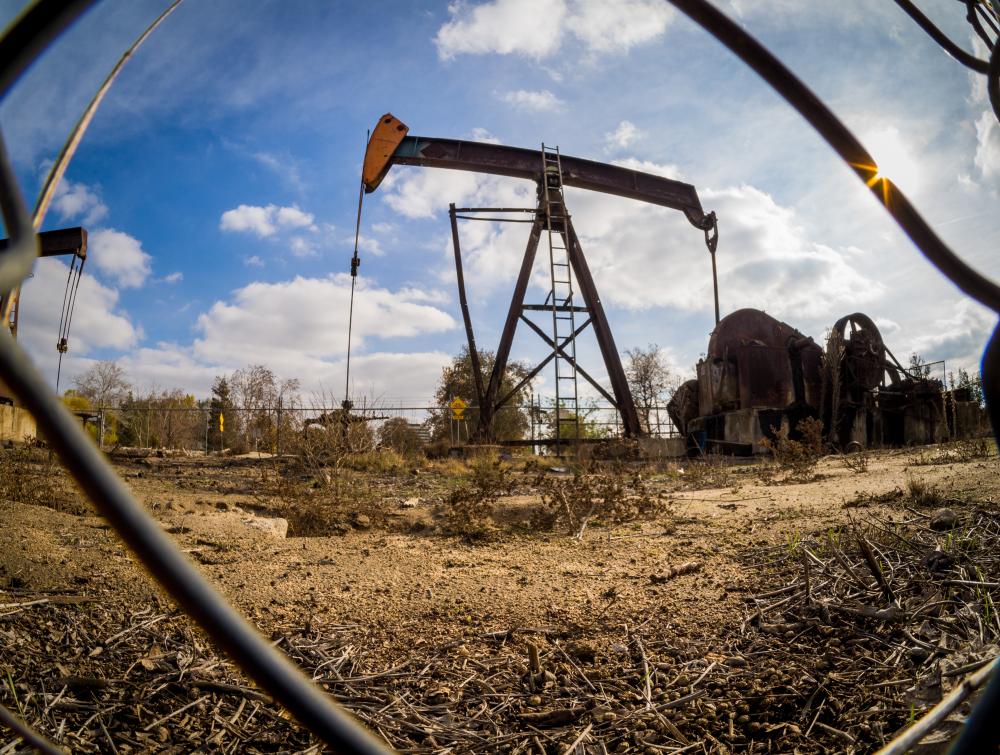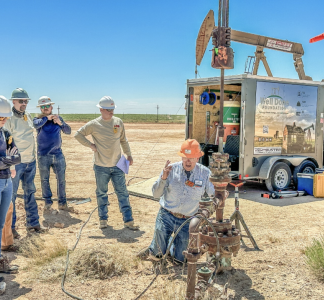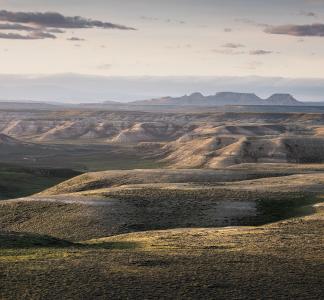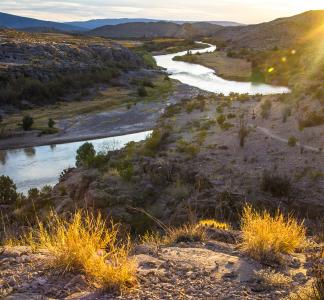What in the world is an orphaned oil well?

An aging oil pump in Bakersfield Park, CA
Staticantics/Flickr
Unplugged oil and gas wells pose silent hazards across the country
What if we told you there were toxic chemicals leaking into the air, water and soil where kids in your neighborhood play? And what if we said that the people responsible were oil and gas executives looking to make a quick buck – and that they don’t intend to plug the leaks?
You’d be appalled... but not too surprised, right? After all, oil and gas executives and their allies are the ones largely responsible for climate change. They knew fossil fuels were causing it in the 70’s and they continue to fabricate lies about it today, all in the name of profit.
Unfortunately, right now, millions of inactive oil and gas wells—a few feet to miles-deep holes bored through the earth used to extract oil and gas from the ground — sit unplugged across the U.S., leaking toxins right next to schools, in backyards and across recreational areas.
Many of these unplugged wells, known as orphaned or abandoned wells, are on public lands, left behind by fossil fuel companies that have decided it’s no longer a good economic choice to continue drilling (they’re right about that part).
Estimates show there are 120,000 documented orphaned wells eligible for closure in the U.S. alone—and as many as several million additional undocumented orphaned wells. And for the most part, people are unaware of the dangers posed to them by these sites.
Orphaned wells leak methane and toxins undetected for years
So what are the risks? First of all, orphaned wells pose a significant threat to the climate. They leak methane, a colorless, odorless gas that has 80 times the heat trapping capacity of CO2.
In addition to warming the planet, methane can cause adverse health impacts like premature birth, asthma and cancer. That’s not to mention toxins like hydrogen sulfide, benzene and arsenic that can leak undetected from wells for years, slowly poisoning the air, water and critical wildlife habitat.
About 14 million people in the U.S. live within one mile of an orphaned well and are exposed to these kinds of threats. They particularly affect communities of color that are already disproportionately impacted by air pollution.
Oil and gas executives aren't paying to plug wells
How did this problem get so big? Well, federal bonding rates – the amount oil and gas companies have to pay upfront to fund clean-up costs before they can lease public lands to drill – haven't been updated in over 60 years. Meanwhile, the cost of plugging wells has only increased. What’s more, oil and gas CEOs only have to put down a small fraction of the money needed to cover the cost of plugging abandoned wells and cleaning up their mess – expenses that can run into the hundreds of millions, if not billions, of dollars. So, when oil and gas companies go bankrupt, as they often do (sometimes strategically), they are no longer financially responsible for the wells and communities get stuck with resulting pollution and the bill.
This problem will only continue to grow. Many of the country’s soon-to-be-retired wells, including idle wells that haven’t been productive for 24 consecutive months, are at significant risk of becoming orphaned. According to research by Carbon Tracker, idle (and unplugged) wells that are projected to become orphaned now outnumber producing wells in most major oil and gas producing states. It's obvious that fossil fuels are not the energy of the future. As we transition to renewable energy and oil and gas wells increasingly go offline in years to come, we risk the landscape being overwhelmed by idle and orphan wells leaking methane and toxins. We need a plan that holds oil and gas executives accountable for cleanup.
Public supports efforts to plug orphaned wells
There’s plenty of public support to fix this problem; 91 percent of western voters support requiring the oil and gas industry to pay for clean-up and land restoration costs when finished drilling. But it has yet to be translated into policy changes that hold oil and gas executives accountable.
In some cases, this has led communities to take matters into their own hands. According to Curtis Shuck, chairman of the Well Done Foundation, “money spent plugging methane-leaking oil and gas wells...is a direct, immediate and effective way to fight climate change.” Based out of Montana, the Well Done Foundation works with farmers, landowners, governments, corporations and nonprofits to locate and plug abandoned or orphaned wells locally and nationally. Their goal is to restore the surface areas surrounding abandoned or orphaned wells to a healthy state.
In some cases, people with the opportunity to transition out of the oil and gas industry are using their skills to plug orphaned or abandoned wells. So far, this transition has led to tens of thousands of new jobs. It’s estimated that federal efforts to plug orphaned or abandoned wells can potentially provide tens of thousands of jobs. Not only is plugging orphaned or abandoned wells great for the environment, but doing so also has the potential to aid in a just transition away from fossil fuels to a clean energy economy. In the immediate future, the BLM can address the issue of orphaned wells through its upcoming update to its bonding rulemaking.
What does it take to plug an orphaned well? We asked an expert.
The Well Done Foundation
MEMO: Biden Administration Proposes Long Overdue Reforms to Oil and Gas Leasing System
Mason Cummings, TWS
What does the Inflation Reduction Act do to help communities and make public lands part of the climate solution?
NPS, Flickr



